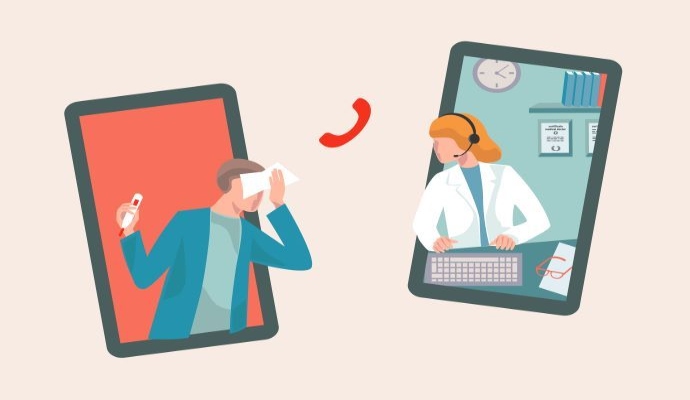Depression Screening Less Likely During Telehealth Than In-Person Visit
A new study shows that patients were less likely to undergo a depression screening during a telehealth visit than an in-person visit early in the pandemic.

Source: Getty Images
- Early in the COVID-19 pandemic, depression screening rates during telehealth appointments plateaued and remained low compared with screenings during in-person visits, according to new research.
Conducted by researchers from the University of California, San Francisco (UCSF), the study examined depression screening by visit type and patient characteristics in a large health system in the early months of the COVID-19 pandemic. The study was published in JAMA Network Open.
Researchers used EHR data to assess adult depression screening rates in six UCSF primary care practices from June 1, 2020, to September 30, 2021. A depression screening was defined as completing the Patient Health Questionnaire 2 (PHQ-2) during an eligible visit. They categorized visits as in-person, video, or telephone using billing information and used it to calculate monthly depression screening rates by visit type. They also calculated the odds of screening at an eligible visit.
The study included 57,301 eligible visits for 37,250 patients during the study period. Of the study sample, 60 percent were female, 8 percent were Black, 0.3 percent were American Indian or Alaska Native, 30 percent were Asian, 10 percent were Hispanic or Latinx, and 42 percent were White.
Overall, the odds of patients undergoing a depression screening during video and telephone visits were lower than during in-person appointments. The adjusted odds ratio was 0.28 and 0.24 for video and telephone visits, respectively, compared to 1 for in-person visits.
“Due to the abrupt transition to telemedicine early in the pandemic and the urgency of the pandemic response, team-based workflows for depression screening lagged for telemedicine encounters,” the researchers wrote.
They added that primary care must fully integrate screening into telehealth visits, leveraging solutions that ease burdens on support staff, such as sending PHQ-9s through the patient portal before visits.
Further, patients who preferred Chinese, Spanish, or languages other than English had lower odds of screening than patients who preferred English. Similarly, patients older than 75 and those covered by Medicaid had lower odds of being screened than patients aged 18 to 30 years and those with private insurance, respectively. The odds of being screened decreased with additional comorbidities.
However, there was no significant difference in the likelihood of depression screening by sex, or race and ethnicity.
The researchers concluded that health systems “must be vigilant and proactive in addressing emerging disparities by race and ethnicity, language, or age, particularly in the telemedicine setting.”
The prevalence of depression in the United States has soared in recent years. According to Gallup poll results, 29 percent of US adults reported having been diagnosed with depression at some point in their lifetime in 2023, up ten percentage points from 2015. Additionally, 17.8 percent of adults had or were being treated for depression in 2023.
As digital health technologies are increasingly employed in mental health treatment plans, researchers are examining strategies to boost their use and efficacy.
A study published last December revealed that mHealth application-based interventions are effective in treating moderate and severe depression; however, certain factors impact their efficacy, like in-app notifications and the length of treatment delivery.
For the study, researchers assessed randomized clinical trials (RCTs) gathered from the PubMed, Embase, and PsycINFO databases from their inception to January 22, 2023. These RCTs evaluated mHealth apps that treat adults with moderate to severe depression. They included 13 RCTs evaluating 16 intervention apps with 1,470 participants in the analysis. Three RCTs were conducted in the United States, three in Europe, six in Asia, and one in Australia.
Researchers found that interventions delivered for less than eight weeks were associated with a greater effect size than those provided for eight weeks or longer. Effect size is “a dimensionless measure of the difference in outcomes under two different treatment interventions.”
Further, effect sizes were more significant for app-based interventions without professional support and in-app notifications.
